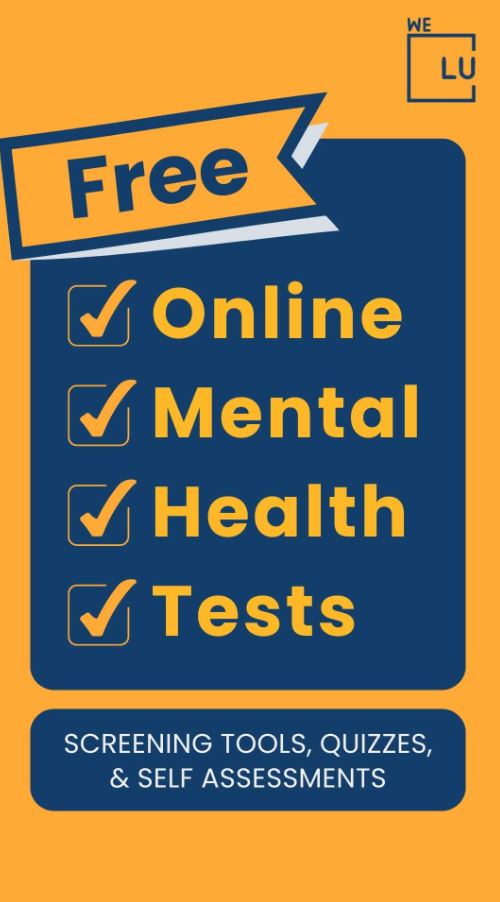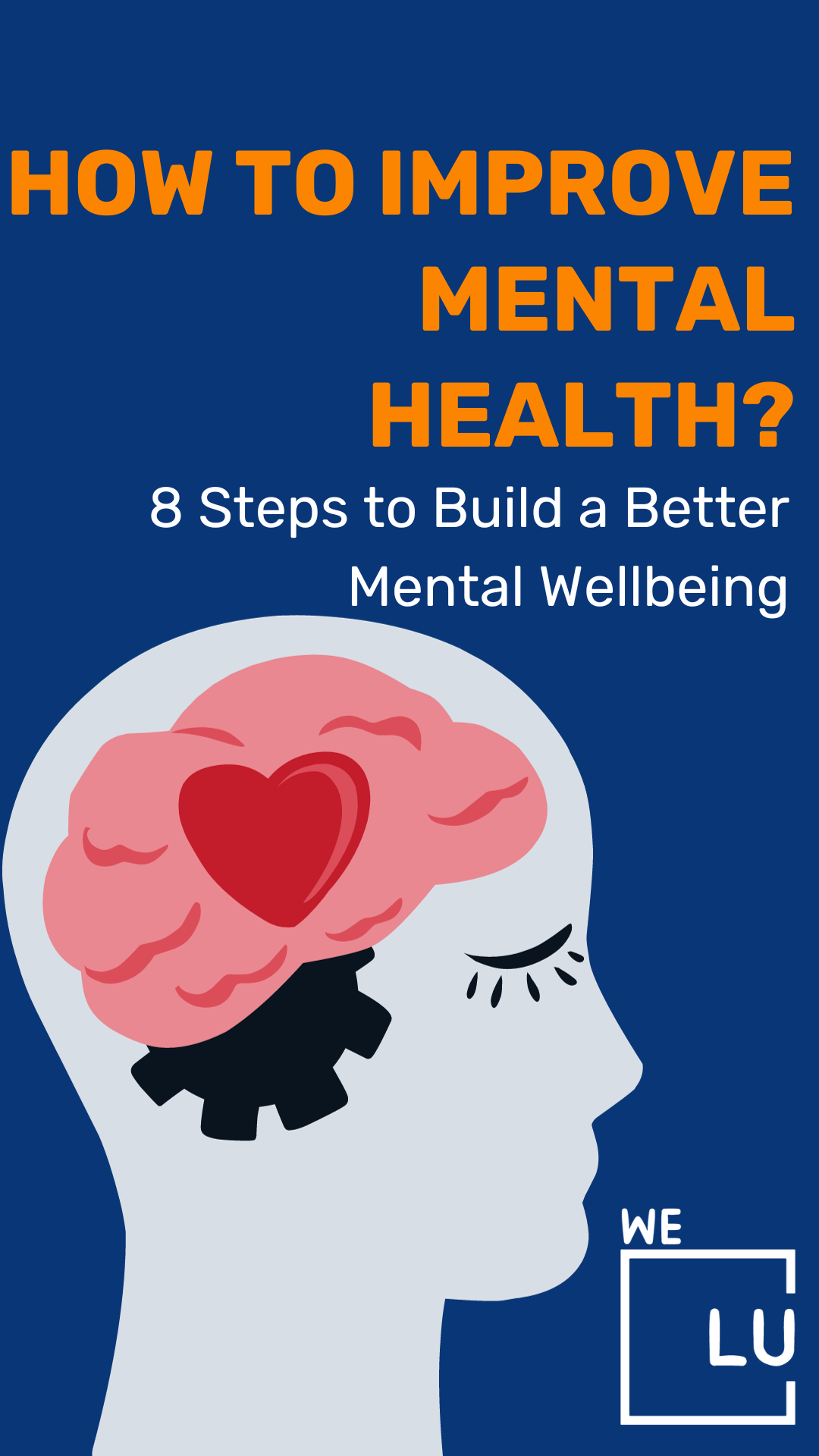Vyvanse Withdrawal Symptoms & Treatment
Doctors may recommend the drug Vyvanse to treat binge eating disorders or attention deficit hyperactivity disorder (ADHD). It is a stimulant that makes it easier to focus. Vyvanse is a form of amphetamine, so as it starts to wear off, a person could feel down or exhausted. This is known as a “Vyvanse crash.” When taking Vyvanse in the morning, a person may suffer a mid-afternoon collapse when the medication starts to leave their system. The crash may make a person’s symptoms challenging to manage.
Although Vyvanse withdrawal symptoms are rarely lethal, they might make quitting difficult or raise your risk of suicide. Other adverse effects include sadness and cravings. It is safer and more likely to have a long-lasting recovery to detox with the aid of a professional treatment program.
What is Vyvanse?
Vyvanse is a prescription drug, primarily used for ADHD treatment. The generic name of Vyvanse is lisdexamfetamine. It is a central nervous system stimulant. Vyvanse is classified as a Schedule II controlled substance in the U.S. because it can cause physical and psychological dependence, according to the United States federal government. Using this drug for more prolonged periods can change your brain chemistry, and make Vyvanse detox more challenging.
Some people may begin to see an improvement in their ADHD symptoms after a few days of taking Vyvanse. But it can take up to several weeks to experience the full effects of the medication.
Vyvanse Withdrawal Timeline
How quickly someone experiences Vyvanse withdrawal often depends on how much and for how long they used the medicine. The two phases of withdrawal are frequently acute and post-acute.
Acute withdrawal symptoms from Vyvanse often go away in seven days or less. Similar symptoms to those of acute withdrawal are also present in post-acute withdrawal, but they vary in severity and length. The severity of post-acute Vyvanse withdrawal symptoms decreases over time, but it may take weeks or months for symptoms to completely go away.
Vyvanse Addiction
Is Vyvanse addictive? There are certain outward signs of Vyvanse addiction that people may notice in their loved ones. Some signs are physical symptoms, while others are related to behavior and lifestyle. Signs of Vyvanse addiction can include:
- Taking Vyvanse without a prescription or taking higher doses than prescribed
- Compulsive drug-seeking and drug usage
- Continuing to use Vyvanse even when there are negative side effects or consequences
- Trying to cut down or stop Vyvanse unsuccessfully
- Being increasingly secretive or changing routines
- Putting oneself in dangerous situations to obtain more Vyvanse or to use it
- Withdrawing from loved ones and responsibilities like school or work
- Need to take more of the drug to achieve the desired effects
When someone uses Vyvanse in any way other than prescribed or instructed by a medical professional, it is considered to be abuse. Vyvanse abuse can include crushing tablets or emptying capsules to snort or inject the drug. Abuse doesn’t necessarily result in addiction, but addiction is more likely to occur in people who have prescription drugs abuse.
Oral misuse is the most prevalent form of nonmedical use of prescription stimulants, making up 52% to 95% of all cases. This includes possession or use of stimulants without a prescription, selling or giving prescription stimulants to others, using prescription stimulants for a non-therapeutic purpose, or orally ingesting prescription stimulants in ways other than prescribed (i.e., chewing capsules). The most common method of non-oral NMU is snorting (insufflation) followed by injection, which can cause excessive harm.
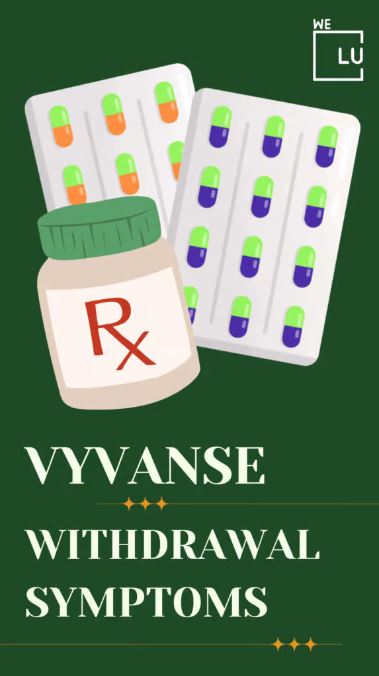
Skip To:
- Vyvanse Withdrawal Symptoms & Treatment
- What is Vyvanse?
- Vyvanse Withdrawal Timeline
- Vyvanse Addiction
- Vyvanse Addiction Statistics
- Does Vyvanse Cause Withdrawals?
- Signs & Symptoms of Withdrawal from Vyvanse
- How Long Does Vyvanse Withdrawal Last?
- Vyvanse Withdrawal Treatment
- Vyvanse Detox
- Reclaim Your Life From Vyvanse Withdrawal
- Top 3 Vyvanse Withdrawals FAQs
Learn More:
World-class, Accredited, 5-Star Reviewed, Effective Addiction & Mental Health Programs. Complete Behavioral Health Inpatient Rehab, Detox plus Co-occuring Disorders Therapy.
CALL(844) 597-1011End the Addiction Pain. End the Emotional Rollercoaster. Get Your Life Back. Start Drug, Alcohol & Dual Diagnosis Mental Health Treatment Now. Get Free No-obligation Guidance by Substance Abuse Specialists Who Understand Addiction & Mental Health Recovery & Know How to Help.
Vyvanse Drug Facts
Generic Name: Lisdexamfetamine [Lis-dex-am-FET-a-meen ]
Drug Class: CNS stimulants
Controlled Substance Class: Vyvanse is classified as a Schedule II controlled substance. Amphetamines have been extensively abused. Tolerance, extreme psychological dependence, and severe social disability have occurred.
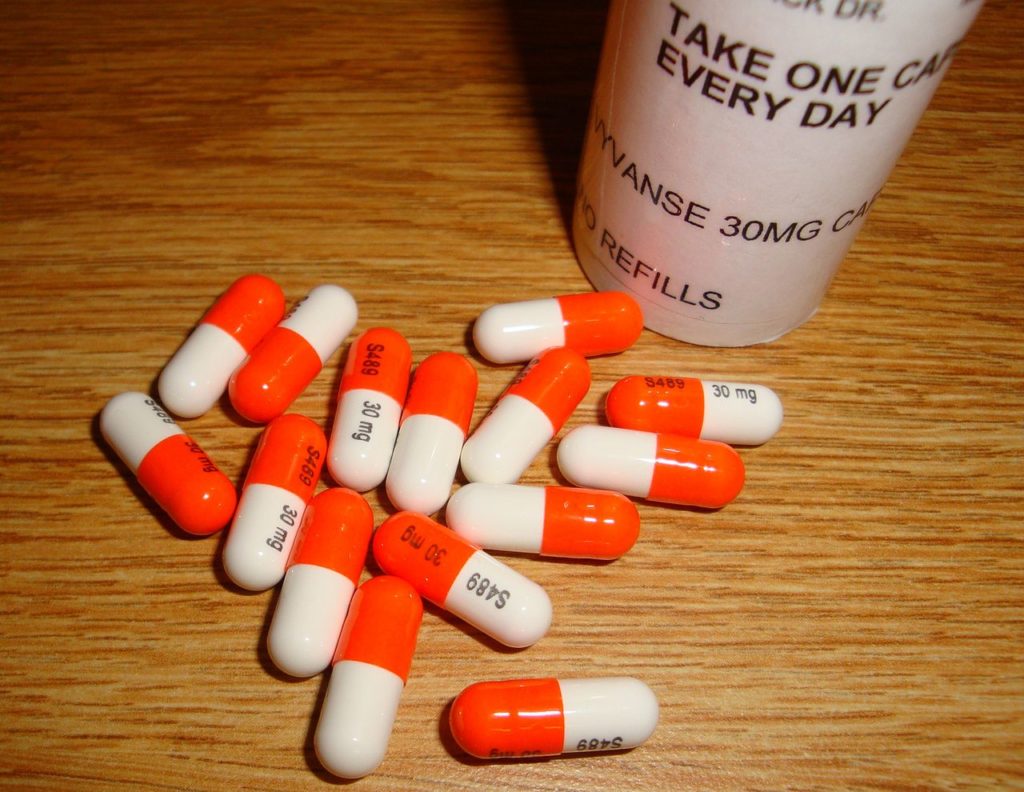
Vyvanse is a central nervous system stimulant. It affects chemicals in the brain and nerves that contribute to hyperactivity and impulse control. Vyvanse is FDA-approved to treat attention deficit hyperactivity disorder (ADHD) in adults and in children who are at least 6 years old.
Vyvanse is also used to treat moderate to severe binge eating disorders in adults. This medicine is not to be used for obesity or weight loss.
Warnings
Vyvanse may be habit-forming, and this medicine is a drug of abuse. Tell your doctor if you have had problems with drug or alcohol abuse.
Stimulants have caused stroke, heart attack, and sudden death in people with high blood pressure, heart disease, or a heart defect.
Call your doctor right away if you have:
- Signs of heart problems–chest pain, feeling light-headed or short of breath
- Signs of psychosis–paranoia, aggression, new behavior problems, seeing or hearing things that are not real
- Signs of circulation problems–unexplained wounds on your fingers or toes.
Amphetamines Drug Fact Sheet Publicly Made Available by the DEA for Prescription Drug Use Disorder Awareness
Vyvanse includes a drug known as lisdexamfetamine that the body has to turn into dextroamphetamine before it can use it. Vyvanse is not a narcotic, but according to the FDA, it is a federally controlled substance (CII) because it can be abused or lead to dependence. It is an amphetamine.
Vyvanse Addiction Statistics
Vyvanse is different from other prescription stimulants such as Adderall (amphetamine-dextroamphetamine) or Ritalin (methylphenidate) because it is not active in its original form. Drugs that remain inactive until they are metabolized are called prodrugs, which can have a lower potential for abuse and drug addiction. Vyvanse is metabolized into the active drug dextroamphetamine through a chemical process called hydrolysis. This is a rate-limiting step that is responsible for the delayed and sustained effect of Vyvanse.
Therefore, crushing, chewing, snorting, or injecting Vyvanse will not result in an immediate effect that produces euphoria or “drug likeability” similar to other commonly abused medications. The prodrug formulation deters patients from seeking immediate stimulation through snorting or injecting the stimulant as the drug’s effects occur over some time. Recreational use of Vyvanse, also called nonmedical use (NMU), is taking Vyvanse in any way other than prescribed.
8%
According to studies surveying adults in the U.S., 7% to 8% of respondents were estimated to have lifetime nonmedical use of prescription stimulants such as Vyvanse.
Source: NCBI
17%
It is estimated that up to 17% of college students abuse prescription stimulants, including Vyvanse.
Source: NCBI
18-25
Nonmedical use of stimulants is most common among patients aged 18 to 25 years.
Source: NCBI
Get Help. Get Better. Get Your Life Back.
Searching for Accredited Drug and Alcohol Rehab Centers Near You?
Even if you have failed previously and relapsed, or are in the middle of a difficult crisis, we stand ready to support you. Our trusted behavioral health specialists will not give up on you. When you feel ready or just want someone to speak to about therapy alternatives to change your life call us. Even if we cannot assist you, we will lead you to wherever you can get support. There is no obligation. Call our hotline today.
(844) 597-1011Does Vyvanse Cause Withdrawals?
Abusing Vyvanse can cause drug dependence, leading to a tolerance of the drug that requires higher and higher doses to achieve the same effect. Extended use, especially at high doses, can alter brain chemistry causing you to crave Vyvanse, as well as trigger unpleasant withdrawal symptoms if you go without it.
Withdrawals from Vyvanse are not fatal, but side effects like cravings and depression can make quitting difficult or increase your risk of suicide. Detoxing with the help of a treatment program is safer and more likely to produce lasting results.
Signs & Symptoms of Withdrawal from Vyvanse
Within a few hours of taking Vyvanse, you can start to experience withdrawal symptoms such as:
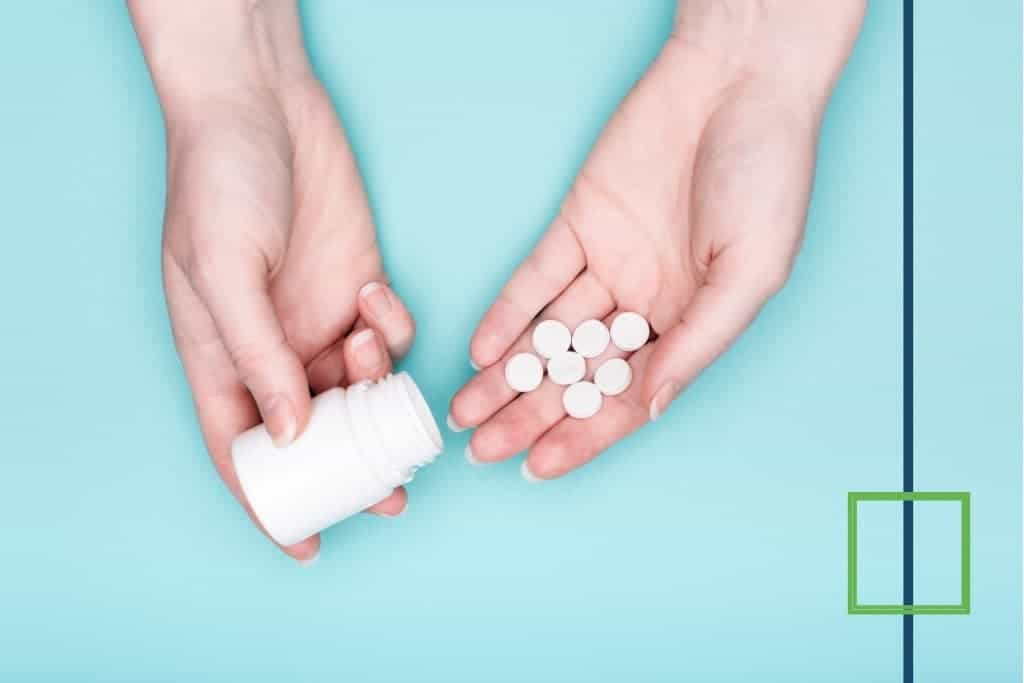
- Depression
- Increased need for sleep
- Difficulty feeling pleasure
- Anxiety
- Cravings
- Increased appetite
The length of these symptoms and their intensity depends on how long you have been taking Vyvanse and how high the doses were. Very heavy users can still experience difficulty feeling pleasure and cravings for weeks, months, and even years.
How bad is it to withdraw from Vyvanse?
Vyvanse withdrawal symptoms can occur in patients stopping Vyvanse abruptly; although, symptoms are usually not serious and can be further minimized by gradually decreasing the stimulant dose before stopping therapy altogether. Patients on higher doses of Vyvanse (e.g., 70 mg) with a long duration of therapy are more likely to experience withdrawal symptoms.
Patients may desire to stop taking Vyvanse for various reasons. They might find side effects such as weight loss, dry mouth, or nausea to be intolerable, or may simply desire to be independent of ADHD medications. However, it may be necessary to gradually decrease a patient’s dose before they can stop taking Vyvanse.
Central nervous system stimulants like Vyvanse cause physiological changes with continued use. This means that over time, the brain adjusts to the regular effects of Vyvanse, such as the feelings of reward, reinforcement, and motivation caused by increased dopamine. The body counteracts these effects by decreasing its sensitivity to norepinephrine and dopamine in certain regions of the brain.
This is one reason patients experience drug tolerance, or the need for higher and higher doses to sustain the same drug efficacy. Patients can experience Vyvanse withdrawal when the body suddenly stops receiving the stimuli that it has become dependent upon. By slowly weaning off Vyvanse, the body has time to make small adjustments and regain its sensitivity to dopamine and norepinephrine. When normal sensitivity is achieved, natural levels of these neurotransmitters will be enough to cause their intended functions.

Get Your Life Back
Find Hope & Recovery. Get Safe Comfortable Detox, Addiction Rehab & Dual Diagnosis High-Quality Care.
Hotline(844) 597-1011No abrupt changes should be made to Vyvanse doses without first consulting a physician. Vyvanse should be taken consistently without skipping any doses. Regular dosing ensures the greatest benefit and allows doctors to evaluate how well the current dose is managing ADHD. In some cases, doctors may allow for a “drug holiday” so a patient can temporarily stop taking Vyvanse.
Another reason a doctor might ask a patient to temporarily discontinue Vyvanse would be to evaluate the efficacy and assess the need for continued therapy. Finally, patients may need to stop Vyvanse immediately to avoid certain drug interactions. For example, opioids, migraine meds, anti-nausea drugs, and antidepressants have the potential to cause serotonin syndrome when taken with Vyvanse. A class of antidepressants called monoamine oxidase inhibitors (MAOIs) can cause dangerously high blood pressure if they are taken less than 14 days before a dose of Vyvanse. It may be necessary to stop Vyvanse entirely to avoid these drug interactions.

How Long Does Vyvanse Withdrawal Last?
Symptoms of Vyvanse withdrawal usually begin within 36 hours of the last dose, shortly after the active component is fully eliminated. Withdrawal can last for several days or weeks, especially in patients who have been on a high dose of Vyvanse for a long time.
Patients typically experience a noticeable drop in energy and mood as their first symptoms, which may be like symptoms of a Vyvanse crash. They may also experience a desire to eat more.
This stage is followed by physical symptoms such as joint aches and muscle pain, with continued mental health effects like irritation or depression. During this time, many patients have trouble sleeping. While this is a common pattern, the withdrawal timeline may be different for any given patient.
Vyvanse Withdrawal Treatment
The best way for most people to manage symptoms of Vyvanse withdrawal is to gradually taper down their dose of the drug. This practice is recommended for people who recreationally abuse Vyvanse and for people who use therapeutic doses.
When someone tapers down their dosage of Vyvanse slowly, over time, withdrawal symptoms are reduced or eliminated. People shouldn’t try to do this on their own without professional supervision, however. Trying to manage the symptoms of Vyvanse withdrawal without professional help can lead to dangerous complications.
First-class Facilities & Amenities
World-class High-Quality Addiction & Mental Health Rehabilitation Treatment
Rehab Centers TourRenowned Addiction Centers. Serene Private Facilities. Inpatient rehab programs vary.
Addiction Helpline(844) 597-1011Proven recovery success experience, backed by a Team w/ History of:
15+
Years of Unified Experience
100s
5-Star Reviews Across Our Centers
10K
Recovery Success Stories Across Our Network
- Low Patient to Therapist Ratio
- Onsite Medical Detox Center
- Comprehensive Dual-Diagnosis Treatment
- Complimentary Family & Alumni Programs
- Coaching, Recovery & Personal Development Events
Vyvanse Detox
When people are dependent upon certain drugs, like opioids or even alcohol, there are specific medications that can be given during withdrawal. These medications can help reduce the symptoms of withdrawal and drug cravings. With stimulants like Vyvanse, there are currently no specific, approved withdrawal medications. Instead, when someone detoxes under medical supervision or in a professional facility, their symptoms can be treated with certain medications as they arise.
For example, Vyvanse medications can include psychiatric medications or sleep aids. The ability to provide the necessary medications is one of the primary benefits of participating in a professional detox program before seeking addiction treatment.
Reclaim Your Life From Vyvanse Withdrawal
There are certain outward signs of Vyvanse addiction that people may notice in their loved ones. Some signs are physical symptoms, while others are related to behavior and lifestyle. We Level Up rehab treatment & detox center can provide you, or someone you love, the tools to recover from addiction with professional and safe Vyvanse detox. Feel free to call us to speak with one of our counselors. We can inform you about this condition by giving you relevant information. Our specialists know what you are going through. Please know that each call is private and confidential.
Top 3 Vyvanse Withdrawals FAQs
-
How long does Vyvanse withdrawal last?
Withdrawing from Vyvanse may take seven days or less. Similar symptoms to those of acute withdrawal are also present in post-acute withdrawal, but they vary in severity and length. The severity of post-acute withdrawal symptoms decreases over time, but it may take weeks or months for symptoms to completely go away.
-
What are the withdrawal symptoms of Vyvanse?
Vyvanse can cause both physical and psychological dependence, especially at higher doses and with long-term use. Quitting for even short periods of time can cause very uncomfortable symptoms including excessive drowsiness and an inability to focus, even on small tasks.
-
What happens if you stop taking Vyvanse cold turkey?
Stopping Vyvanse suddenly can cause a “crash.” This causes unpleasant withdrawal symptoms, including trouble sleeping, depression, and sluggishness. If you need to stop taking this drug, you’ll have to work closely with a healthcare professional.
Experience Transformative Recovery at We Level Up Treatment Centers.
See our authentic success stories. Get inspired. Get the help you deserve.
Start a New Life
Begin with a free call to an addiction & behavioral health treatment advisor. Learn more about our dual-diagnosis programs. The We Level Up Treatment Center Network delivers recovery programs that vary by each treatment facility. Call to learn more.
- Personalized Care
- Caring Accountable Staff
- World-class Amenities
- Licensed & Accredited
- Renowned w/ 100s 5-Star Reviews
We’ll Call You
Search We Level Up Vyvanse Withdrawal Detox, Mental Health Topics & Resources
Sources
[1] Medine Plus. Lisdexamfetamine.
[3] FDA. VYVANSE ® (lisdexamfetamine dimesylate).
[5] Martin D, Le JK. Amphetamine. [Updated 2022 Aug 1]. In: StatPearls [Internet]. Treasure Island (FL): StatPearls Publishing; 2022 Jan-. Available from: https://www.ncbi.nlm.nih.gov/books/NBK556103/
[6] Heal DJ, Smith SL, Gosden J, Nutt DJ. Amphetamine, past and present–a pharmacological and clinical perspective. J Psychopharmacol. 2013 Jun;27(6):479-96. DOI: 10.1177/0269881113482532. Epub 2013 Mar 28. PMID: 23539642; PMCID: PMC3666194.
[7] Vasan S, Olango GJ. Amphetamine Toxicity. [Updated 2022 Nov 8]. In: StatPearls [Internet]. Treasure Island (FL): StatPearls Publishing; 2022 Jan-. Available from: https://www.ncbi.nlm.nih.gov/books/NBK470276/
[8] Siefried KJ, Acheson LS, Lintzeris N, Ezard N. Pharmacological Treatment of Methamphetamine/Amphetamine Dependence: A Systematic Review. CNS Drugs. 2020 Apr;34(4):337-365. DOI: 10.1007/s40263-020-00711-x. PMID: 32185696; PMCID: PMC7125061.
[9] Farzam K, Faizy RM, Saadabadi A. Stimulants. [Updated 2022 Jun 16]. In: StatPearls [Internet]. Treasure Island (FL): StatPearls Publishing; 2022 Jan-. Available from: https://www.ncbi.nlm.nih.gov/books/NBK539896/
[10] Farzam K, Faizy RM, Saadabadi A. Stimulants. 2022 Jun 16. In: StatPearls [Internet]. Treasure Island (FL): StatPearls Publishing; 2022 Jan–. PMID: 30969718.



